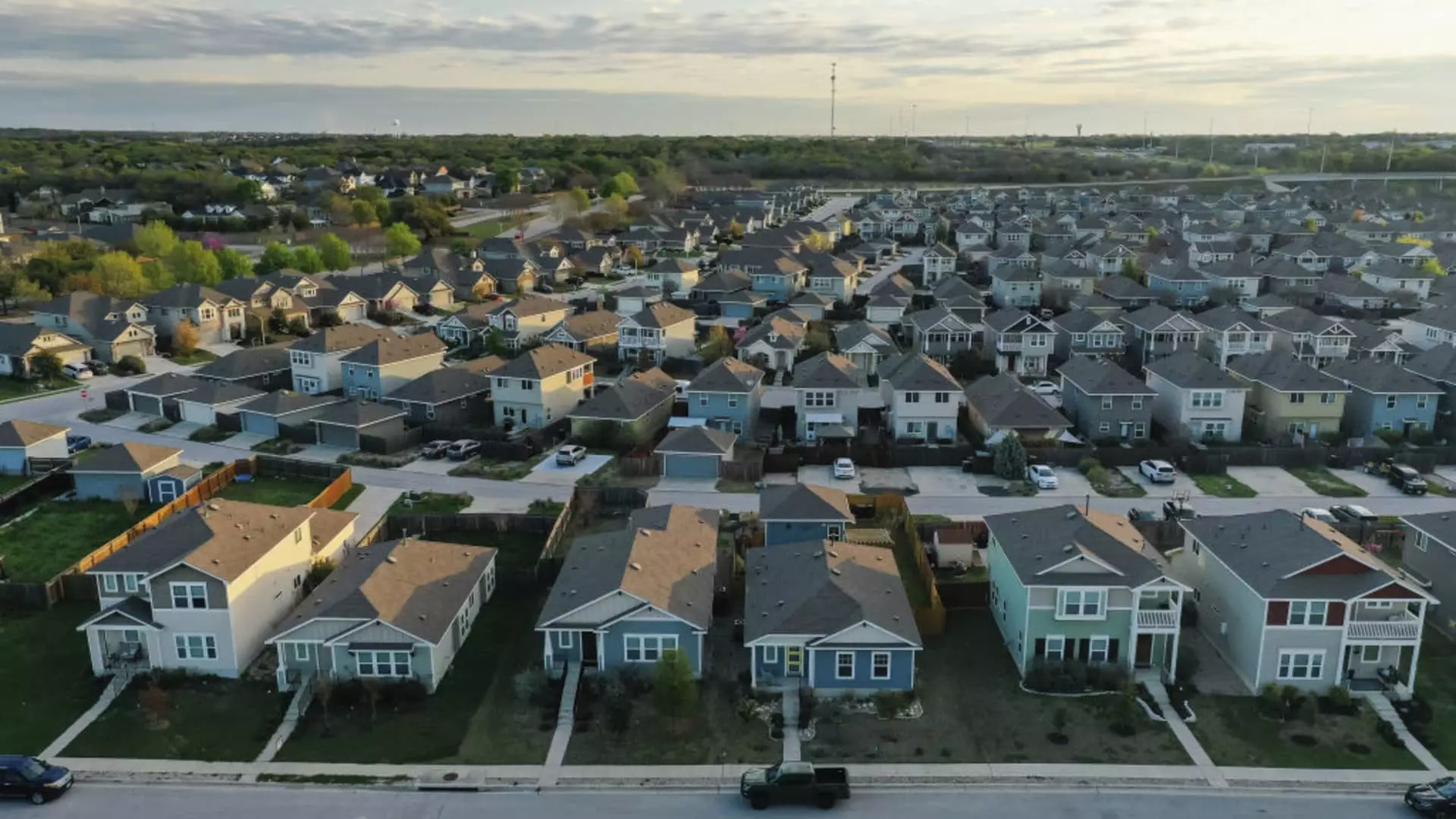The spring housing market is traditionally viewed as a prime opportunity for homebuyers, yet current conditions are compelling many to hold off on making a purchase. While there is an increase in the number of home listings, the overall sentiment remains dampened. Recent statistics indicate that mortgage rates have remained relatively stagnant, with minimal fluctuations impacting buyer behavior. In fact, the latest report from the Mortgage Bankers Association reveals a striking decrease of 4% in mortgage applications for home purchases in the last week alone, illustrating the hesitancy in the market. When compared to this time last year, demand appears tepid and largely unchanged, raising concerns about the overall health of the housing sector.
One of the most pressing issues for potential buyers is the persistent rise in home prices, further compounded by a growing average loan size for purchase transactions. Data shows that the average loan size reached $447,300 last week, marking a record high since late 2024. This trend underscores the ongoing challenge for buyers who face greater financial burdens just to enter the market. As home prices soar and loan sizes increase, many buyers are left grappling with affordability issues, leading to a stagnation in applications. Furthermore, although there was a minor decrease in interest rates for 30-year fixed mortgages—from 7.02% to 6.97%—this marginal evolution does little to alleviate the financial strain experienced by most prospective homeowners.
Interestingly, while applications for home purchases are dwindling, refinancing activity has seen an uptick, rising by 12% week-over-week and 17% year-over-year. However, it is critical to interpret these figures with caution, as the basis of comparison stems from an already low volume of refinancing applications. Many existing homeowners have secured comparatively lower rates, leading to a general reluctance to refinance under current market conditions, which further complicates the housing climate.
The reality is stark: home sales are approaching near 30-year lows, and the national average home prices continue to reach unprecedented highs. Despite the uptick in home listings, the supply remains strikingly diminished from pre-pandemic levels, with current inventory 25% lower than that seen in January 2019. While some sellers are making price adjustments—15.6% of listings saw reductions in January—the majority retain their asking prices thanks to competitive market dynamics. On average, homes are taking over 54 days to sell, a delay not witnessed since early 2020, which reinforces the ongoing supply-demand imbalance that characterizes the current housing landscape.
The unfolding scenarios within the housing market present both challenges and slight opportunities for potential buyers and sellers alike. As mortgage applications continue to decline and home affordability remains a pressing issue, the future of the housing sector remains uncertain. What is evident is that until significant changes occur—whether in interest rates, home prices, or overall buyer sentiment—the movement towards a more balanced housing market will likely remain elusive. Homebuyers and sellers alike should stay informed and adaptable as the market navigates these tumultuous waters.

